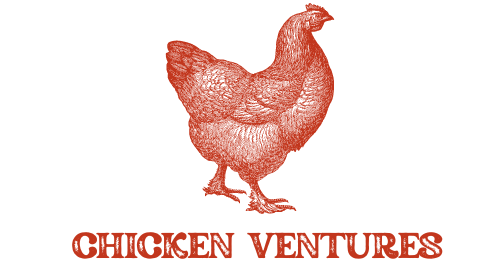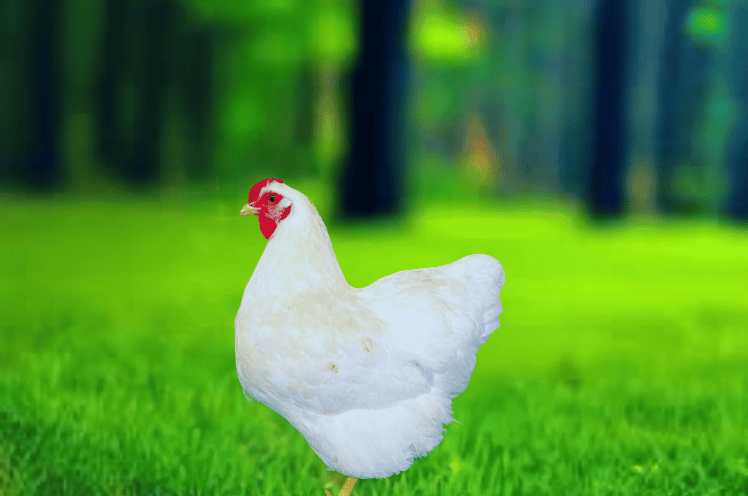That’s a White Wyandotte chicken. One type of chicken will stand out in your chicken coop because its snow white feathers shine in the morning light. White Wyandotte chicken breed that is both pretty and useful.
History of the White Wyandotte Chicken
The White Wyandotte hens comes from the Wyandotte breed, which has an interesting and sometimes hard to follow history. In the late 1800s, four breeders in the US worked together to create the White Wyandotte. They were H. M. Doubleday, John Ray, L. Whittaker, and Fred Roulette.
People think of the Silver Laced Wyandotte as the first type, and it was an important part of making the breed what it is today. It’s not clear where the Silver Laced Wyandotte came from, but breeds like the Dark Brahma and Spangled Hamburg have been suggested.
The White Wyandotte hens wasn’t a main or original type of the Wyandotte breed. Instead, the Silver Laced Wyandotte had it as a “sport” first. When chickens are bred, a “sport” is a quick change in their genes that gives them new traits or feathers. [John P. Quin]
A bright drawing of a rooster and hen that won first place at the Boston Poultry, Pigeon, and PetStock Exhibition in January 1898. The drawing is of a White Wyandotte Cockerel and Pullet bred, owned, and shown by Arthur G. Duston of Marlboro, Massachusetts.
In the case of the White Wyandotte, this sport had all-white feathers, a unique genetic variation that breeders were interested in.
The first White Wyandottes were not the shape and colors that showbirds have today. They looked like big rose-comb Leghorns. Their feathers were dirty white with black spots here and there. The following old picture from an Illinois chicken magazine published in 1902 shows how the White Wyandotte looked in 1894:
A picture from a 1902 poultry magazine of a group of white Wyandottes that Mr. A.G. Duston had bred in 1894. In 1888, the APA made rules for white Wyandottes.
White Wyandotte Chicken Overview
The chickens is a pretty American breed. Because of the way their feathers are, having a few of these hens in your group would help. The Silver Laced Wyandotte was one of the first chickens brought to the United States. It is still one of the most beautiful birds you can find. She’s a breed that can do two things every week. She lays three to four light brown eggs.
It takes them longer to grow and lay eggs than mixed birds because they are heritage birds. The eggs are worth the wait, but they won’t lay them until they are 20 weeks old. Once in a while, a hen will get broody when you least expect it. They’re great moms and leaders.
White Wyandotte hen are calm and don’t bother other chickens, which makes them look shy. They are wary of other breeds because they like being with their own kind. You can keep her inside or let her run around freely. Most chickens like to run around freely, though.
| Beginner-friendly | Yes |
| Color | White |
| Egg Size | Large |
| Weight | 6.5 – 8 lbs |
| Eggs | 200 eggs/year |
| Egg Color | Brown |
| Hardiness | Cold |
| Temperament | Friendly but assertive |
Appearance
It looks like these White Wyandotte hens are big and pretty. The chickens in this picture are big, have a lot of feathers, and look very serious. They grew up in northern states like Michigan and New York. It can get very cold there in the winter, so these chickens need to be very cold. It was more likely for chickens with bigger beards and wattles to get cold.
This is the reason White Wyandotte hens were bred to have a rose comb. Rose combs are much better at dealing with cold weather and rarely get frostbite. Their beaks are thick, and their heads are wide and short. The color of their eyes is warm. The bill, ears, and combs are all red.
The legs of this chicken breed are yellow, and each foot has four toes. Their legs shouldn’t have feathers, and their skin should be yellow.

Size and Weight
White Wyandotte chickens are medium-sized chickens. Hens weigh about 6-7 pounds, and roosters can weigh up to 8-9 pounds. They are built to last.
Egg Production Of White Wyandotte Chicken
White Wyandotte hens lay about 200 medium to large brown eggs a year, making them great egg makers. They tend to slow down or stop laying eggs in the winter, but if you give them more light, these tough birds will keep laying eggs.
Wyandottes don’t lay eggs when molting, which happens every year in late summer or early fall.
Because they can do both, people like them for their meat and eggs.
Also, these chickens might get broody every once in a while, which is great if you want to hatch eggs. But remember that while brooding, they will not be laying eggs for a while.

Noise Levels
Besides the egg song, they don’t say much. Every chicken talks while roams, but it’s a low sound that won’t bother people nearby. They are quiet, which makes towns a good place for them.
Pros and Cons Of White Wyandotte Chicken
Pros
- Cold-hardy
- Excellent foragers
- Dual purpose breed
- Beautiful color
- Don’t need much extra care
- Friendly towards people
Cons
- Need more space
- Dominant towards smaller breeds
- Don’t do well in warm climates
- Some breeds lay more eggs
- They are no lap chickens
- Tend to go broody
White Wyandotte Hen vs White Wyandotte Rooster
| Feature | White Rooster | White Hen |
| Comb, Wattles | Big, red | Small, pink |
| Weight | 8 lbs | 6.5 lbs |
| Plumage | White | White |
| Tail Feathers | Long sickles, pointed | Shorter, rounded on the edges |
| Back | Pointed saddle feathers | Rounded feathers |
| Body | Large and broad with long legs | Smaller, shorter legs |
White Wyandotte Color Variety
The most popular color for Wyandotte chickens is not white; that award goes to the laced and penciled types.
For Wyandottes, the American Poultry Association’s Standard only lists ten official color varieties, but the Europeans name thirty. Let’s compare the White variety to the others.
The Wyandottes can be broken down into three main groups:
- One color: They come in white, blue, black, buff, and…
- Wyandottes that have been marked: Columbia, Silver Penciled, black-and-white,
- Laced Wyandottes come in silver, gold, blue, and other colors.
The Silver Laced Wyandotte was the first type of member of the Wyandotte family. All the other color types came from the Silver Laced Wyandotte, even the White Wyandotte.
In the case of the White Wyandotte, it was a “sport” that caused a genetic change in Silver Laced Wyandotte’s that created a new breed with white feathers. The White Wyandotte and the Golden Laced were both standardized in 1888.
Feeding
You need to feed your white Wyandotte chickens good food that is high in protein to make sure they grow right. The best chick starter (or growth) mix has at least 20% protein. When they are 16 to 20 weeks old, your white Wyandotte Chickens will be ready to lay eggs. They can be slowly changed to a 16% layer feed.
The oyster shells should also be easy for your chickens to get calcium from. This should be separate from their regular food; it should come in a different bowl. It would help if you gave them different grit that doesn’t dissolve. There is also liquid grit that is just the right size for chicks. A chicken needs clean, fresh water, just like any other animal. When your birds lose their feathers, switch them to food with 20% more protein. This is what you can do until their feathers grow back.
Personality of White Wyandotte Chicken
People like White Wyandottes because they are friendly. They are great for both new and experienced chicken keepers because they are easy to train, friendly, and calm.
When they’re around other chicken types, White Wyandottes can act bossy. Even though they are calm and friendly most of the time, they may stand their ground around submissive or bantam breeds. This behavior usually helps keep the flock’s pecking order, but it should be watched to make sure that all the chickens get along.
Coop Setup
Because they are big and round, White Wyandotte chickens need a lot of space. There should be 4 square feet for each chicken, but more is always better. Even though they are calm most of the time, each will need 6 square feet of coop space if they are with more violent breeds. Each chicken needs 8 to 10 inches of space in the coop to sleep.
But they’ll like it if you give them more room. If it gets warmer, they’ll spread out. They’ll all curl up together to stay warm if it gets cooler. Make sure the perches can hold their weight. Sand a 2×4-inch piece of wood and lay it on the ground with the wide side facing up. This will make a safe place to sleep. They can keep their feet warm with this.
It will be hard for these big ladies to double-bunk so they will need a 12×12-inch nesting box.
Regarding the outside area to move around.
For a white Wyandotte chicken, getting tasty treats right from the yard is the best thing in the world. They love being outside and free to move around.
They will stay in one place if you put up strong fencing around it. Additionally This will keep them from going too far and ending up as Mr. Fox’s lunch. They can’t fly very well, so a three-foot fence will keep them inside.
For each chicken in a run, make sure they have 8 square feet of space. They will do bad things like feather picking when bored if you don’t give them enough space.

